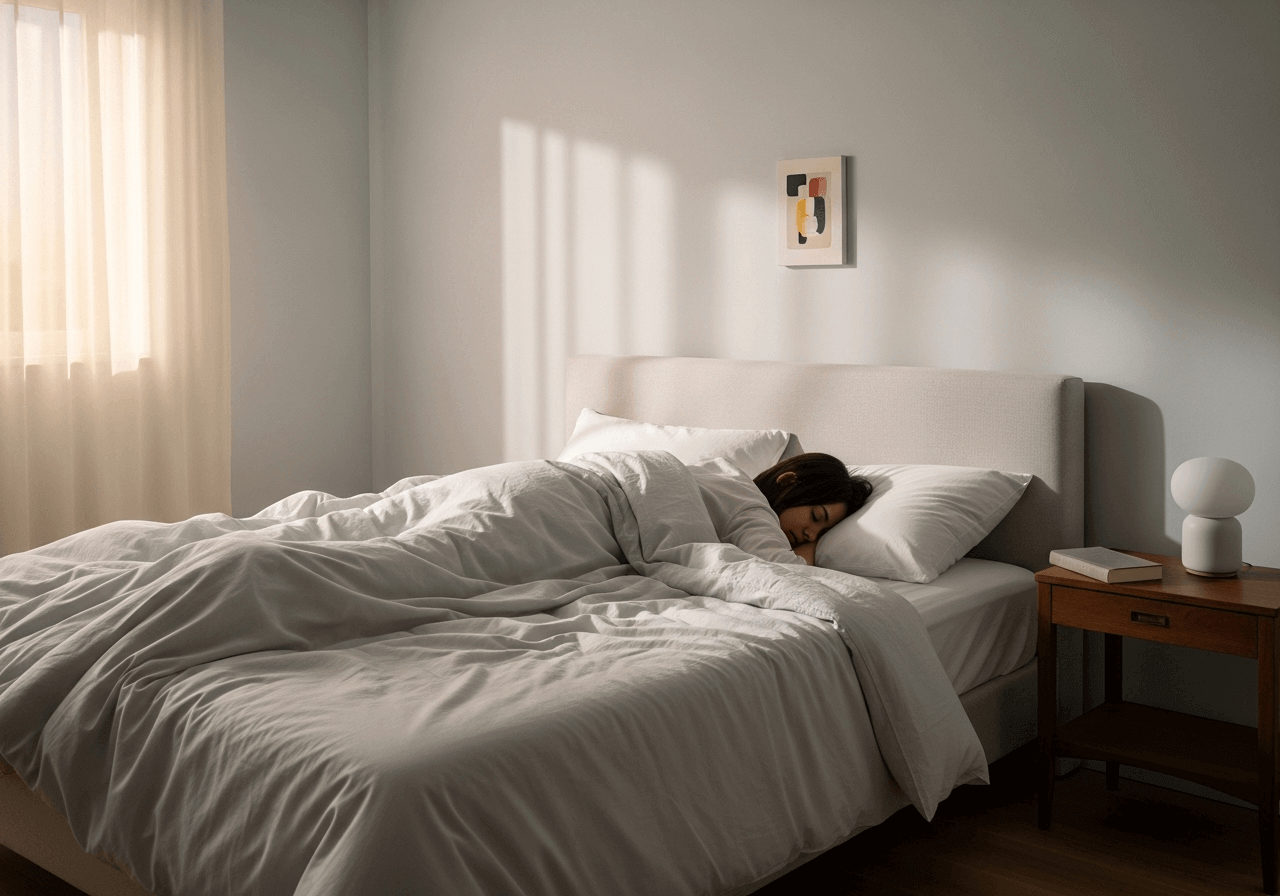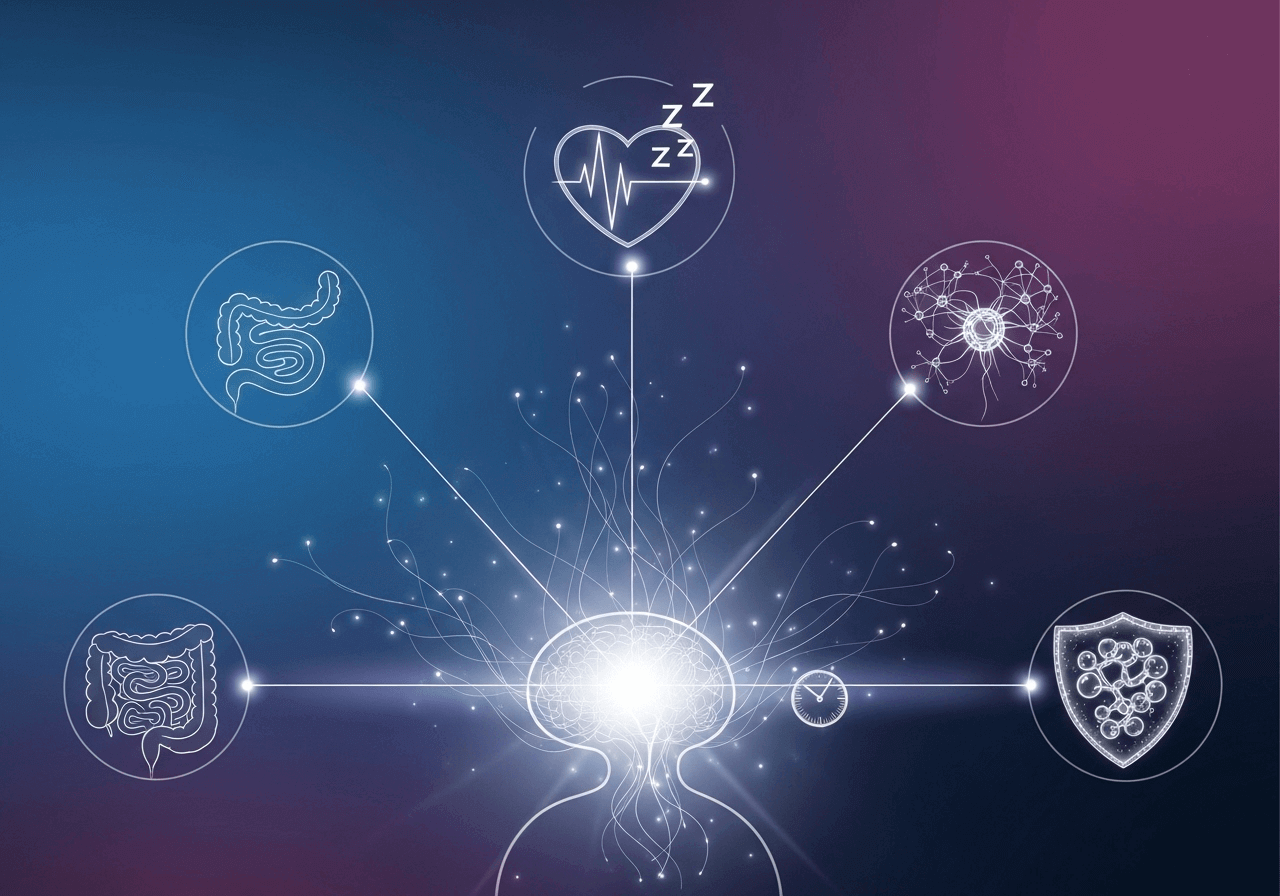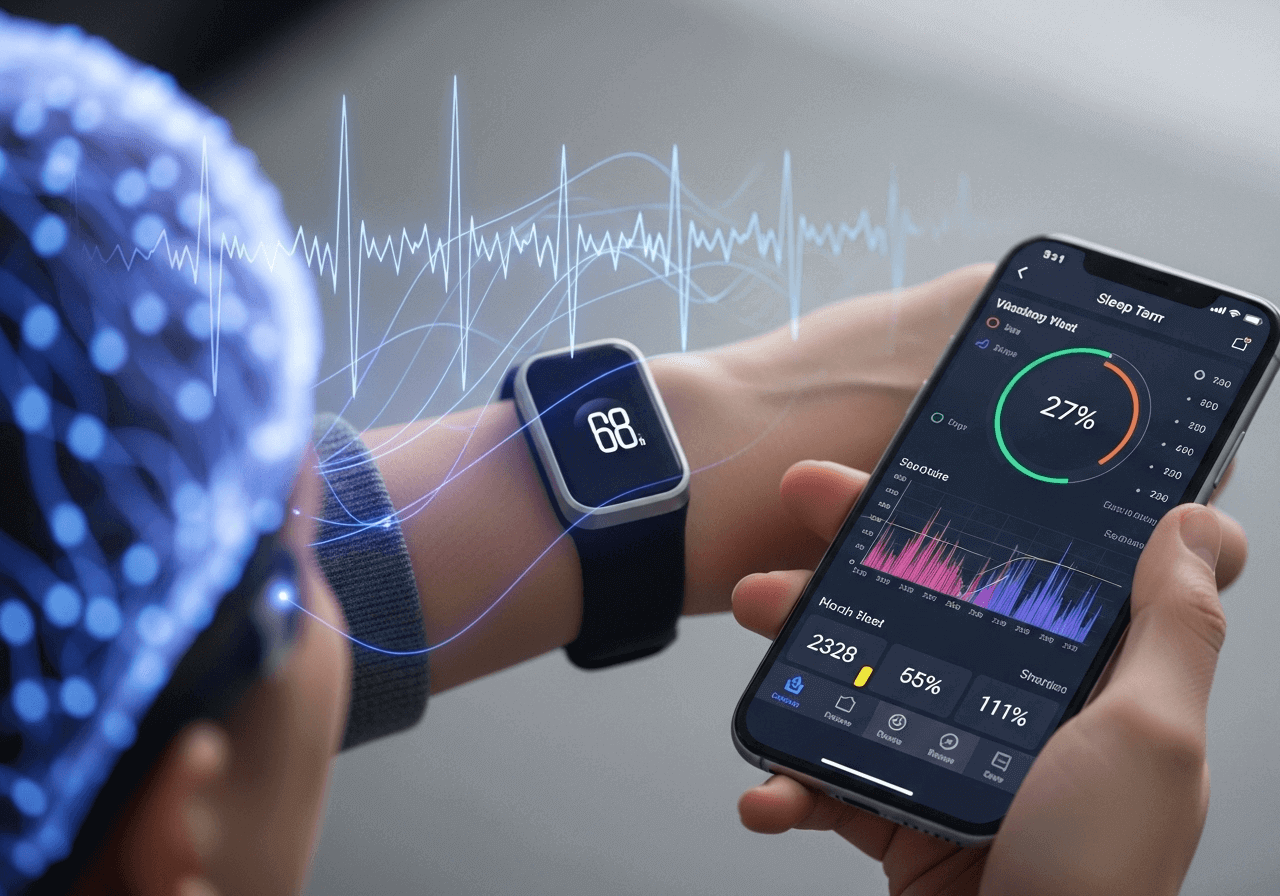The Enigmatic World of Sleep: A Scientific Exploration
 Serene Bedroom Scene
Serene Bedroom Scene
Sleep, a fundamental biological process, occupies a significant portion of our lives. Far from being a mere period of inactivity, sleep is a dynamic and intricate state essential for physical and mental restoration, optimal cognitive function, and overall well-being. In today's demanding world, the profound importance of quality sleep is often underestimated, leading to various health challenges. This article will explore the fascinating science behind sleep, delving into its fundamental stages, cyclical patterns, the concept of truly effective sleep, and common sleep disturbances.
The Architecture of Sleep: Stages and Cycles
Sleep is not a uniform state but a carefully orchestrated progression through distinct phases, each marked by unique brainwave patterns and physiological shifts. These phases collectively form the sleep cycle, which recurs several times throughout a typical night. Sleep is broadly categorized into two main types: Non-Rapid Eye Movement (NREM) sleep and Rapid Eye Movement (REM) sleep.
 Brain Activity During Sleep
Brain Activity During Sleep
Non-Rapid Eye Movement (NREM) Sleep
NREM sleep consists of three progressively deeper stages, each vital for physical recovery and the consolidation of memories.
-
NREM Stage 1 (N1): The Initial Descent
This is the lightest stage, representing the transition from wakefulness into sleep. It typically lasts only a few minutes. During N1, brain activity, heart rate, and breathing begin to slow, and muscles start to relax. Individuals in this stage can be easily roused and might experience sudden muscle twitches or a sensation of falling.
-
NREM Stage 2 (N2): The Foundation of Light Sleep
N2 is a deeper stage than N1, characterized by further reductions in heart rate and breathing, a decrease in body temperature, and the cessation of eye movements. Brain activity exhibits specific patterns, including sleep spindles and K-complexes, which are thought to help maintain sleep despite external stimuli and aid in memory processing. A substantial portion of our total sleep time, roughly 50%, is spent in N2 sleep.
-
NREM Stage 3 (N3): The Deepest Restoration
Also known as slow-wave sleep (SWS) or delta sleep, N3 is the most profound and restorative stage of sleep. During N3, brainwaves become very slow and high-amplitude (delta waves). This is when the body undergoes significant physical repair and growth, and the immune system is strengthened. Waking someone from N3 sleep is difficult, and they may feel disoriented upon awakening. Deep sleep is most prominent in the early part of the night, with each N3 period typically lasting between 20 to 40 minutes in the initial cycles.
Rapid Eye Movement (REM) Sleep: The Vivid Dreamscape
REM sleep is a paradoxical state where the brain is highly active, almost resembling wakefulness, yet the body experiences temporary muscle paralysis (atonia). This stage is defined by rapid eye movements, heightened brain activity, and vivid dreaming. REM sleep is crucial for cognitive functions such as memory consolidation, learning, and emotional regulation. It usually begins about 90 minutes after falling asleep, with subsequent REM stages becoming longer as the night progresses, sometimes extending up to an hour in later cycles. REM sleep typically accounts for about 25% of an adult's total sleep time.
The Dynamic Sleep Cycle
 Sleep Stages Diagram
Sleep Stages Diagram
A complete sleep cycle, encompassing all NREM stages and REM sleep, generally lasts around 90 minutes. Throughout a night, an individual typically experiences four to six such cycles. The composition of each cycle evolves; earlier cycles tend to have more deep sleep, while later cycles feature more REM sleep. Various factors, including age, recent sleep patterns, and the presence of sleep disorders, can influence the duration and proportion of each sleep stage within a cycle.
 Sleep Cycle Metaphor
Sleep Cycle Metaphor
Understanding Sleep Quality: Beyond Just Hours
While the sheer duration of sleep is undeniably important, the concept of "quality sleep" extends far beyond simply accumulating a certain number of hours. Truly effective sleep is defined by its restorative power, enabling the body and mind to fully recover and prepare for the demands of wakefulness. It's not merely about the quantity of sleep, but its inherent quality.
What is Effective Sleep?
Effective sleep, often termed restorative sleep, is sleep that adequately fulfills its biological purposes. This implies a smooth progression through all sleep stages, particularly the crucial deep NREM sleep and REM sleep, without significant interruptions. The outcome is a feeling of being refreshed, alert, and capable during the day, rather than experiencing persistent tiredness or impaired cognitive function. Key indicators of effective sleep include:
- Subjective Satisfaction: Waking up feeling genuinely rested and content with your sleep.
- Appropriate Timing: Aligning your sleep schedule with your body's natural circadian rhythms.
- Adequate Duration: Consistently obtaining the recommended hours of sleep for your age group.
- High Efficiency: Spending a substantial percentage of time in bed actually asleep.
- Sustained Alertness: Maintaining consistent alertness and cognitive sharpness throughout your waking hours.
Metrics for Sleep Quality
 Sleep Quality Metrics Diagram
Sleep Quality Metrics Diagram
Assessing sleep quality can involve both personal perception and objective measurements. Personal assessments often rely on self-reported evaluations of sleep experience. Objective measures, frequently employed in sleep studies, provide detailed data on the structure of sleep, including:
- Sleep Efficiency: The proportion of time spent asleep while in bed. A higher percentage signifies better sleep quality.
- Sleep Latency: The amount of time it takes to fall asleep. A shorter time is generally indicative of healthier sleep onset.
- Wake After Sleep Onset (WASO): The total time spent awake after initially falling asleep. Lower WASO indicates fewer disturbances and better sleep continuity.
- Proportion of Sleep Stages: The percentage of time spent in each distinct sleep stage (N1, N2, N3, REM). Sufficient time in deep and REM sleep is paramount for restorative benefits.
The Disruptions: Common Sleep Disorders
 Sleep Disorders Image
Sleep Disorders Image
Despite the body's inherent need for restorative sleep, various conditions can disrupt normal sleep patterns, leading to significant health consequences. These are broadly categorized as sleep disorders, and they can adversely affect sleep quality, timing, and duration, thereby impairing an individual's ability to function effectively during waking hours. While there are numerous recognized sleep disorders, some are more commonly encountered than others.
Insomnia
Insomnia stands as one of the most prevalent sleep disorders, characterized by persistent difficulty initiating sleep, maintaining sleep, or experiencing early morning awakenings with an inability to return to sleep. It can manifest as either short-term (acute) or long-term (chronic) and can profoundly hinder daytime performance, leading to symptoms such as fatigue, irritability, and impaired concentration. Insomnia may arise independently or as a symptom of an underlying health condition, such as anxiety or chronic pain.
Sleep Apnea
Sleep apnea is a serious condition marked by repeated interruptions in breathing during sleep. The most common form, obstructive sleep apnea (OSA), occurs when the airway becomes blocked or collapsed during sleep, resulting in loud snoring and gasping for air. Another type, central sleep apnea (CSA), involves the brain's failure to send proper signals to the muscles responsible for breathing. If left untreated, sleep apnea can contribute to severe health issues, including cardiovascular problems and metabolic disorders.
Restless Legs Syndrome (RLS)
Restless Legs Syndrome (RLS) is a neurological disorder defined by an irresistible urge to move the legs, often accompanied by uncomfortable sensations. These sensations are frequently described as crawling, tingling, pulling, or aching. Symptoms typically intensify in the evening or at night and are temporarily relieved by movement, making it challenging for affected individuals to fall asleep or remain asleep.
Narcolepsy
Narcolepsy is a chronic neurological condition characterized by overwhelming daytime sleepiness and sudden, uncontrollable episodes of sleep. Individuals with narcolepsy may also experience cataplexy, a sudden loss of muscle tone triggered by strong emotions, as well as sleep paralysis and vivid dream-like experiences upon falling asleep or waking. This condition stems from the brain's impaired ability to regulate normal sleep-wake cycles.
The Profound Impact of Sleep on Health
 Health Impact Image
Health Impact Image
The significance of sleep extends far beyond simply feeling rested; it is a cornerstone of overall health, influencing nearly every bodily system and cognitive process. Chronic lack of sleep or poor sleep quality can have profound and detrimental effects on both physical and mental well-being.
From a physical health standpoint, insufficient sleep is associated with an elevated risk of serious medical conditions. It can contribute to cardiovascular issues, including high blood pressure, heart attacks, and strokes, by affecting blood pressure regulation and inflammatory responses. Sleep also plays a crucial role in metabolic health; persistent sleep deprivation can impair glucose metabolism and insulin sensitivity, increasing the likelihood of developing type 2 diabetes and obesity. Furthermore, adequate sleep is essential for a robust immune system, as studies indicate that insufficient sleep can weaken the body's defenses, making individuals more vulnerable to infections.
Cognitively, sleep is indispensable for optimal brain function. It facilitates memory consolidation, a process where newly acquired information is transferred from short-term to long-term memory. During sleep, the brain also performs a vital 'cleansing' function, removing metabolic waste products and toxins that accumulate during wakefulness, which is crucial for maintaining healthy brain cells. A lack of sleep can lead to impaired concentration, reduced problem-solving abilities, diminished creativity, and slower reaction times, significantly impacting daily performance and safety.
Mental and emotional health are also deeply interconnected with sleep. Sleep disturbances are frequently both a symptom and a risk factor for various mental health conditions, including depression, anxiety, and mood fluctuations. Sufficient sleep helps regulate emotions, enhance resilience to stress, and foster a more positive outlook. Conversely, chronic sleep deprivation can intensify feelings of irritability, sadness, and hopelessness, creating a detrimental cycle that further disrupts sleep.
Sleep Monitoring and Technology
 Sleep Monitoring Image
Sleep Monitoring Image
In our modern era, technology has revolutionized our ability to monitor and understand sleep patterns. Advanced sleep tracking devices and applications, such as SnailSleep APP, provide valuable insights into sleep quality, duration, and patterns. These tools can help individuals identify potential sleep issues and track improvements over time.
The Role of Sleep Tracking
Sleep tracking technology has evolved significantly, offering both basic and advanced monitoring capabilities. Basic trackers may measure sleep duration and provide simple sleep stage estimates, while more sophisticated devices can offer detailed analysis of sleep architecture, including time spent in each sleep stage, sleep efficiency, and sleep latency.
Benefits of Sleep Monitoring
Regular sleep monitoring can provide several benefits:
- Awareness: Understanding your sleep patterns and identifying potential issues
- Optimization: Making informed adjustments to improve sleep quality
- Accountability: Tracking progress and maintaining motivation for better sleep habits
- Professional Insight: Providing valuable data for healthcare providers when discussing sleep concerns
Conclusion
Sleep is far more than a passive state of rest; it is an active, complex, and essential biological process that underpins our health and well-being. Understanding the science behind sleep—from its intricate stages and cycles to its profound impact on our physical and mental health—empowers us to make informed decisions about our sleep habits and seek appropriate help when needed.
The journey to better sleep begins with knowledge and awareness. By recognizing the importance of quality sleep and understanding the factors that influence it, we can take proactive steps to improve our sleep health. Whether through better sleep hygiene practices, addressing underlying health conditions, or utilizing modern sleep tracking technology, the path to restorative sleep is within reach.
Remember, sleep is not a luxury but a fundamental necessity for a healthy, productive, and fulfilling life. Prioritizing sleep is an investment in your overall well-being, one that pays dividends in improved health, enhanced cognitive function, and better quality of life.
This article is part of our comprehensive sleep health series. For more insights and practical tips on improving your sleep, explore our other articles and consider using SnailSleep APP to track and optimize your sleep patterns.
Related Articles
- REM vs Non-REM Sleep: Understanding Your Sleep Stages
- The Complete Guide to Circadian Rhythm Optimization for Better Sleep
- Women's Sleep Health: How Hormonal Cycles Impact Sleep Quality Throughout Life
